Home » Food & Beverages » Glass Ergo Jars
As a professional glass container supplier, Newray packaging offers various sizes of glass ergo jars with deep metal twist-off lids. Made with high-quality flint glass, the cylindrical round shape of the NEWRAY Glass Ergo Food Jar will give your product artisan appeal.
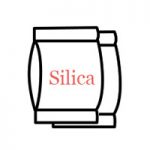
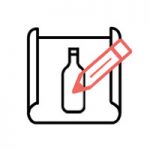
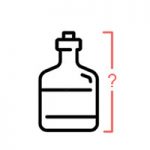
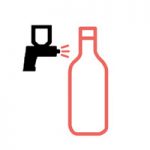
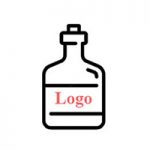
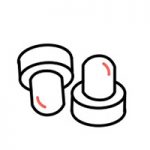
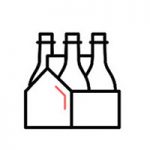

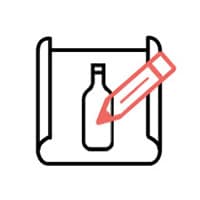
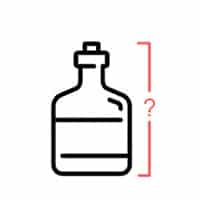
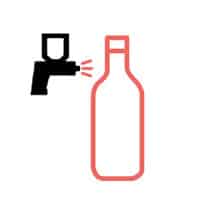

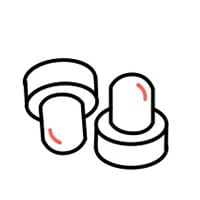
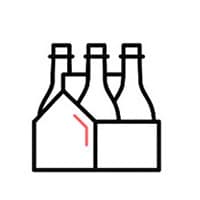
Ergo jars feature a deep lug finish and are not compatible with screw top caps. A lug finish consists of several tapered ridges designed to mate and require only a partial turn to seal the cap. Deep lug caps are sold separately. High-quality metal lug caps feature a deep lug finish that is both functional and attractive. Caps include a PVC-free gasket which keeps the product safe from contaminants. The simple design of the Ergo jar gives ample space for labeling while allowing customers to see the product inside.
Ergo jars can be functional in many kinds of usage: it can be a honey jar, and deep can make it easy to open, we have several sizes from 106ml, 212ml, 314ml, and 580ml of the original sizes in the dimension of 73mm, but also other sizes in other diameters and sizes 100ml 150ml 200ml, 380ml 580ml, 750ml, 1000ml, and 1500ml. It can be a glass jam jar, the round design is the classic shape for custom labels. It can be a glass pickle jar, the whole range of capacities can meet any of your requirements in different ranges of your products. It can be used as gifts for baby shower, wedding favors, birthdays, thanksgiving, Halloween, Christmas etc., and can also be used to store spices, jams, honey, jelly, and other foods.
These wide-mouth ergo jars are made of high-quality, food-grade glass, BPA-free, Lead-Free, 100% recyclable, non-toxic, and preservative.
As the famous glass bottle manufacturer in China, all our ergo jars are in stock. To support the beginner of business in different food fields, our stock goods are offered in low MOQ. We can also offer glass ergo jars in bulk, welcome to contact Newray to customize colors for jar and lug lids, sizes, labels, packaging boxes, and more. If you need, please feel free to contact us.
Didn’t find what you were looking for? Feel Free to Contact us!
| ITEM | Capacity (ml) | Diameter (mm) | Height (mm) | Neck Finish (mm) | Weight (g) |
|---|---|---|---|---|---|
| NREGG-1-180 | 180 | 67 | 90 | 61 | 150 |
| NREGG-2-220 | 220 | 67 | 11 | 61 | - |
| NREGG-3-280 | 280 | 66 | 112 | 62 | 170 |
| NREGG-4-150 | 150 | 74 | 56 | 68 | 120 |
| NREGG-5-180 | 180 | 83 | 68 | 68 | 180 |
| NREGG-6-280 | 280 | 75 | 105 | 69 | 180 |
| NREGG-7-350 | 350 | 75 | 111 | 69 | 190 |
| NREGG-8-500 | 500 | 75 | 150 | 69 | - |
| NREGG-9-1000 | 1000 | 90 | 203 | 80 | 510 |
| NREGG-10-250 | 250 | 58 | 133 | 52 | 200 |
| NREGG-11-120 | 120 | 61 | 65 | 56 | 100 |
Although Newray holds the FSSC food-grade certification and our bulk glass bottles are strictly processed according to food-grade standards during production, we still recommend that food manufacturers clean the glass bottles before filling them. Here are the reasons:
Pollution during Transportation and Storage: Even though the glass packaging bottles meet FSSC food-grade standards during production, they are typically packaged and sealed with shrink film on pallets. However, fine dust can accumulate during storage since our warehouse is not fully enclosed and the warehouse doors remain open during the day to allow for forklift access. This is especially true for clear glass bottles, which can accumulate dust over long periods. During transportation and handling, the bottles may also come into contact with air, dust, oil stains, or fingerprints. Therefore, cleaning the packing jars and bottles ensures that they are completely free of contaminants, preventing any potential impact on the quality of the filled contents.
Disinfection and Bacteria Prevention: Although the glass packaging containers are sterile during production, many food manufacturers still subject their packaging bottles to rigorous cleaning and disinfection procedures to ensure that the products meet local hygiene standards. Even if the bottles themselves meet food-grade standards, cleaning and disinfection remain crucial steps in preventing contamination and ensuring food safety.
Ensuring Packaging Quality: For products like ketchup, honey, spirits, and jam, which are high-viscosity and prone to sticking, any dust, residue, or contaminants on the glass bottleneck or body can affect the filling efficiency, as well as the appearance of the food, and even the seal of the cap. Therefore, cleaning and drying glass packaging pots is a key step in ensuring packaging quality.
Typically, food manufacturers use automated cleaning and disinfection systems to ensure the jar glass and packing bottles are free from contaminants. Disinfection is often carried out using steam or hot water to guarantee hygiene during the filling process further.
Newray Glass Factory offers different packaging methods during product production. The choice of packaging method depends on the type, size, transportation requirements, and customer preferences. Here are the most common glass bottle packaging methods we use:
1. Carton Packaging
Method: Glass bottles are packed into cartons, with dividers inside to prevent the bottles from colliding with each other, reducing breakage. Cartons come in different types, and customers can choose the appropriate type based on the total weight of the bottles in each carton.
Advantages: Cartons provide good protection for the bottles and are ideal for long-distance transportation. They are easy to stack and store.
Disadvantages: Carton costs can be high, and carton debris may fall into the bottleneck, potentially causing contamination.
Applicable Scenarios: Suitable for products that are easy to handle and have low carton weight, such as small batches or high-value glass bottles, such as cosmetic bottles or premium liquor bottles.
2. Pallet Packaging
Method: Glass bottles are stacked directly on pallets, with pallet paper or corrugated sheets used to layer and stack bottles to a specific height. The height of the palletized goods for export usually does not exceed 1.25m or 2.5m. The height is adjusted according to customer warehouse storage requirements and the internal height of the container, ensuring product safety while maximizing the loading capacity of the container. After palletizing, the factory typically wraps the entire pallet in shrink film or stretch film to prevent the bottles from moving during transportation, reducing the risk of breakage, and providing dust and insect protection. After shrink-wrapping or stretch film protection, straps are used to secure the pallet for additional protection, preventing tilting.
Advantages: Ideal for bulk shipments and easy forklift handling, improving loading and unloading efficiency.
Disadvantages: Bottles may come into contact with each other, potentially causing scratches or damage during transport, affecting appearance.
Applicable Scenarios: Suitable for industrial bottles or large-volume orders.
Method: As the name suggests, carton and pallet packaging is a combination of the above two methods. Bottles are first packed into cartons with dividers, then placed on a pallet and stacked layer by layer. After reaching a certain height, the pallet is wrapped in shrink film, and finally secured with straps.
Advantages: The safest packaging option, minimizing the risk of breakage and facilitating easy loading and unloading.
Disadvantages: Higher labor costs and overall costs. This packaging method also increases the volume of the shipment, which can lead to higher transportation costs.
Applicable Scenarios: Suitable for heavy or high-value glass bottles that are difficult to handle, and in countries with high handling costs.
These three packaging methods are the most common options for glass bottles. Each method has its advantages and disadvantages. Customers should choose the appropriate packaging based on the characteristics of their product and their cost budget. If you're unsure of which option to choose, feel free to contact your sales representative for more professional advice.